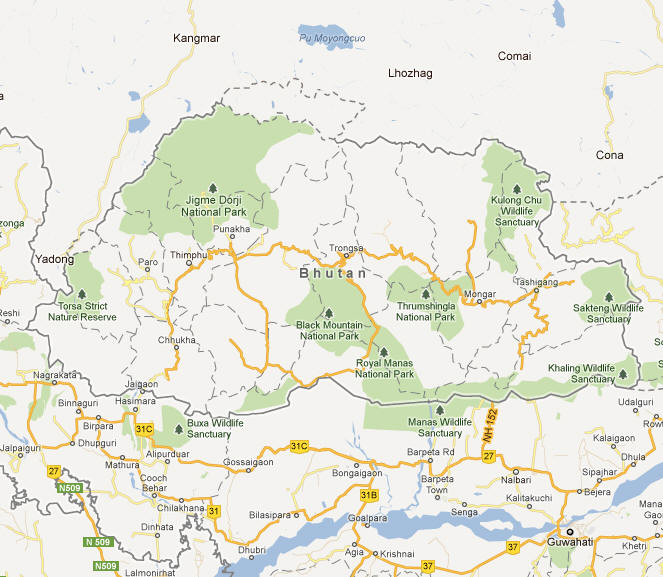Bhutan Facts
Bhutan, State of Asia; 46,000 km², 754,900 residents (2019).Bhutan, located in the Himalayas, borders China (Tibet) in the north and India in the east, south and west. The capital is Thimphu (114,600 residents, 2017).

Country facts
- Printing Yul / Kingdom of Bhutan
- Country abbreviation: BT
- Area: 46 000 km²
- Population (2019): 754,000 residents
- Capital: Thimphu
- Main language: dzongkha
- State: Monarchy
- Head of State: Jigme Khesar Namgyal Wangchuk (King)
- Head of Government: Lotay Tshering
- Per capita GDP (2018): US $ 3 360
- GNI per capita (2018): US $ 3,080
- Currency unit: 1 ngultrum = 100 chetrum
- Currency code: BTN
- Country number (telephony): 975
- Internet Domain Name: bt
- Time difference compared to Sweden: +5
- National Day: December 17 (the first heir king installed, 1907)
Nature
- Land use: forest (66%), agricultural land (3%), other (31%)
- Highest mountain: Kula Kangri (7,554 m asl)
Population
- Population density (2019): 16 residents per km²
- Natural population growth (2019): 0.9%; birth number 16 ‰, death number 7 ‰
- Age structure (2019): 0-14 years (26%), 15-64 (70%), 65- (6%)
- Average life expectancy (2019): 68 years; men 71 years, women 71 years
- Infant mortality (2019): 15 per 1,000 live births
- Population forecast 2050: 800,000 residents
- HDI (2017): 0.612 (place 134 of 189)
- Urbanization rate (2019): 38%
- Most populous city (2017): Thimphu (114,600 residents)
Business
- Industry’s contribution to GDP (2017): agriculture (16%), industry (42%), service (42%)
- Exports (2017): US $ 555 million
- Main export products: electricity, calcium carbide, wood, fruit
- Main exporting countries: India
- Imports (2017): US $ 1,020 million
- Main import products: fuel, vehicles, machinery
- Main importing countries: India
- Railway network: nothing in operation
Bhutan is a transition area between the Himalayan mountain system in the north of over 7,000 m above sea level. and the Brahmaputra flood plain in the south at about 15 m above sea level. This large difference in height and the general slope of the land surface to the south causes large differences in temperature and precipitation and has a strong effect on vegetation, accessibility and cultivation opportunities.
The country has a form of constitutional monarchy. In 1998, the king handed over the executive power to a council of ministers, but retained the role of head of state and commander-in-chief. Ministers are elected by the National Assembly for a five-year term, and ministerial posts are distributed by the King. From 2007 it is allowed to register political parties, and in 2008 the country got its first written constitution.
Agriculture at the self-sufficiency level is the dominant industry. The country’s balance of payments is entirely dependent on foreign aid, which is largely from India. An important source of income is the export of electricity from the country’s rich water energy resources.
Bhutan Map














































